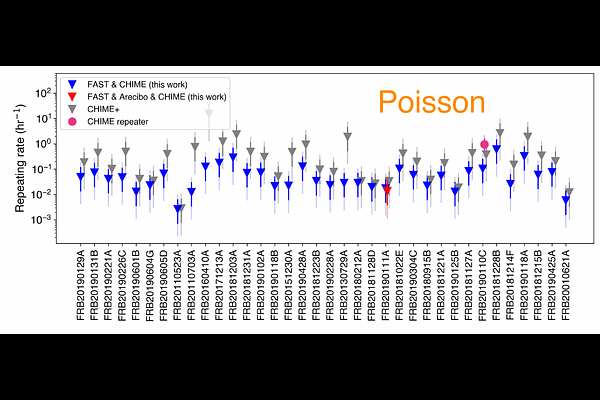Do they repeat? Monitoring 36 non-repeating FRBs with FAST

Do they repeat? Monitoring 36 non-repeating FRBs with FAST
Yuri Uno, Tetsuya Hashimoto, Tomotsugu Goto, Shinnosuke Hisano, Yi Hang Valerie Wong, Arthur Chen, Sujin Eie, Simon C. -C. Ho, James O. Chibueze, Yu-Wei Lin, Seong Jin Kim, Tzu-Yin Hsu, Poya Wang, Pei Wang, Murthadza Aznam
AbstractThe origin of fast radio bursts (FRBs), highly energetic, millisecond-duration radio pulses originating from beyond our galaxy, remains unknown. Observationally, FRBs are classified as non-repeating or repeating, however, this classification is complicated by limited observing time and sensitivity constraints, which may result in some repeating FRBs being misidentified as non-repeating. To address this issue, we adopt both empirical and machine-learning techniques from previous studies to identify candidates that may have been misclassified. We conducted follow-up observations of 36 such candidates, each observed for 10 minutes using the Five-hundred-meter Aperture Spherical Telescope (FAST). No radio bursts exceeding a signal-to-noise ratio of 7 were detected, with a typical 7 sigma fluence limit of ~0.013 Jy ms. We constrain the repetition rates of these sources using two statistical models of FRB occurrence. Combining our FAST non-detections with prior observations, we derive upper limits on the repetition rates of ~$10^{-2.6}$-$10^{-0.22}$ hr$^{-1}$ under a Poisson process, and ~$10^{-2.3}$-$10^{-0.25}$ hr$^{-1}$ under a Weibull process. This work presents one of the most stringent upper limits on FRB repetition rates to date, based on a sample size five times larger than those used in previous studies.